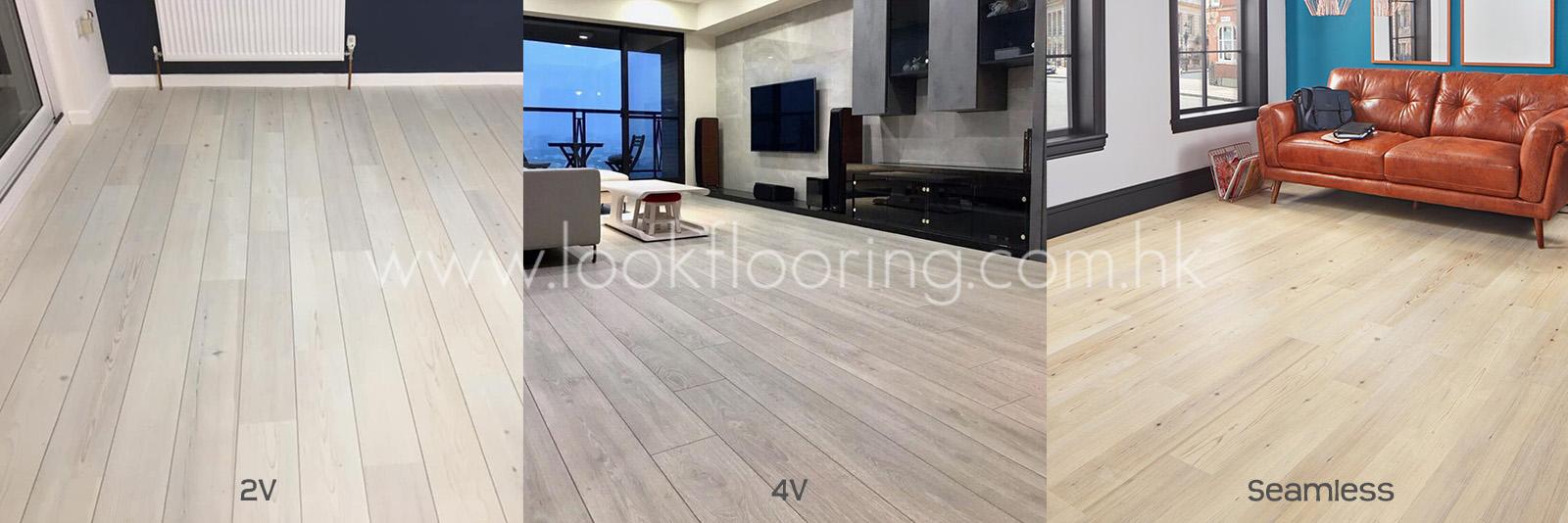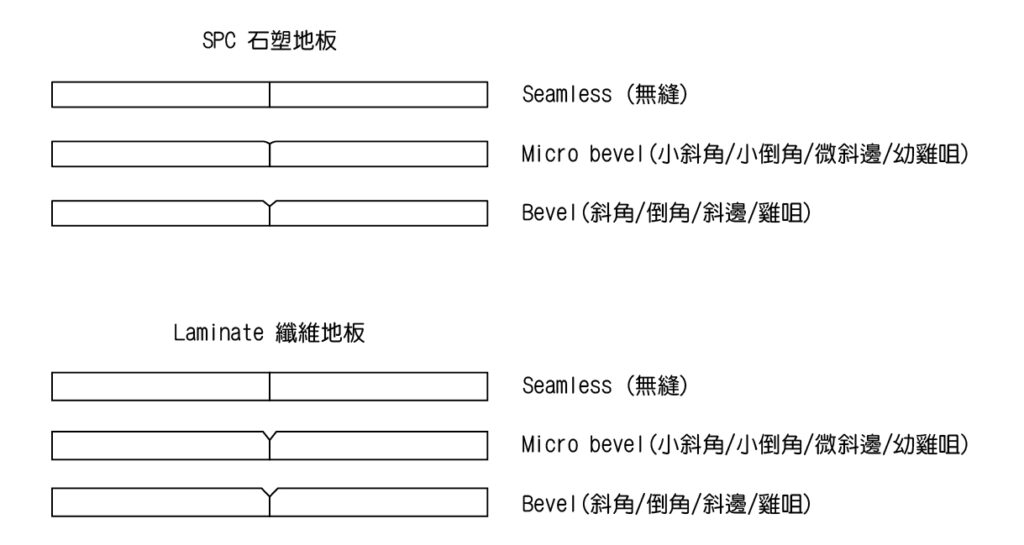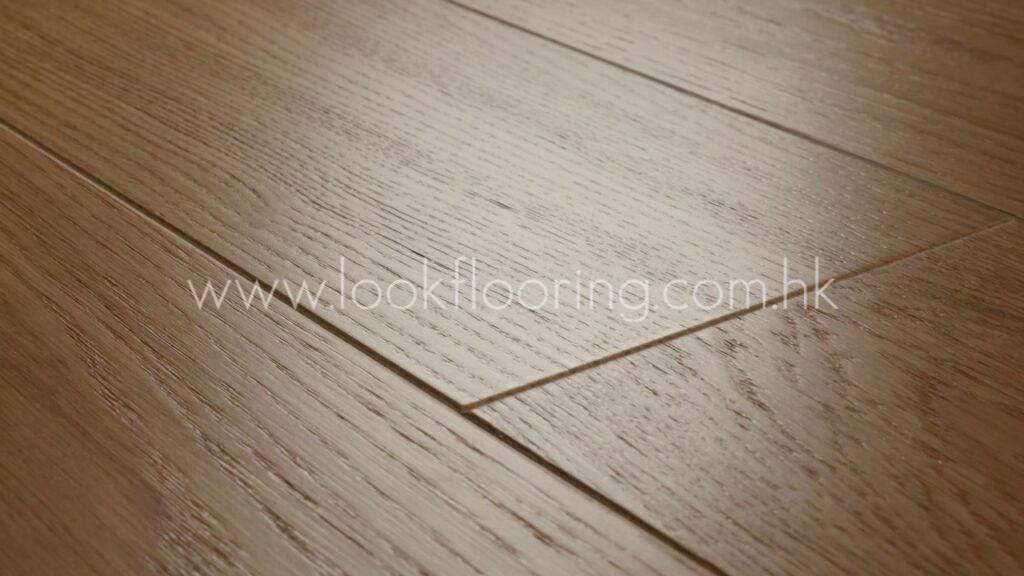Trivia
Flooring with bevelled edges
Floor edge designs are generally divided into two types: seamless and bevelled.
Seamless refers to flooring where all four edges are cut at 90-degree angles. Once installed, the floor appears as one large, continuous surface with only the printed pattern visible, creating a more spacious visual effect.
Bevelled (also known as 4V) means all four edges are cut at a 45-degree angle. After installation, each plank is visibly separated, emphasizing the three-dimensional texture of each piece.
There’s also a 2V bevel type, where only the long edges are bevelled and the short edges remain seamless—this creates a visual effect that elongates the floor horizontally.

Bevelled edges have many names—including chamfer, bevel, angled edge, chicken mouth, and V-groove. There are also slight differences between the bevel designs used in SPC (Stone Plastic Composite) flooring and Laminate flooring (see picture below).

SPC bevels are generally slightly narrower than those on laminate. The biggest difference is the micro bevel: Laminate’s micro bevel is a small angled cut, while SPC’s micro bevel is more like a rounded edge that’s close to seamless.
Bevel isn’t just a simple design choice—it also serves a functional purpose. Since flooring inevitably undergoes expansion and contraction due to temperature changes, and each plank may respond differently, this can lead to uneven surfaces. When this happens, the joints between planks may become misaligned, creating height differences. That’s when the bevel comes into play: it helps adjust and smooth out these inconsistencies, reducing the feeling of unevenness between planks.

